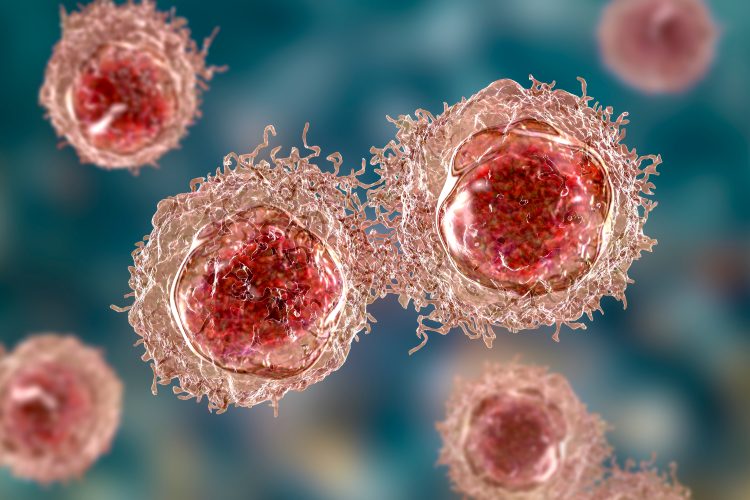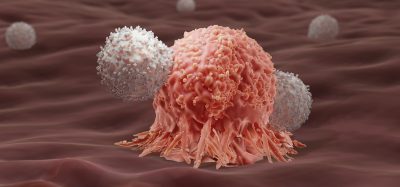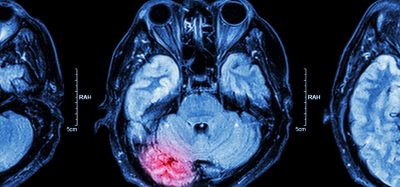Targeting cancer cells in early hypoxia
Posted: 18 March 2024 | Drug Target Review | No comments yet
Inhibiting the LDHA and GOT1 enzymes could prevent cancer cells’ ability to produce energy, without affecting healthy cells.

Scientists from the Francis Crick Institute have revealed how cancer cells survive in the first few hours after being cut off from a supply of oxygen. This finding could help to prevent cancer from becoming resistant to therapy.
Oxygen is mostly used by cells for energy production. When oxygen levels are low, most cells survive because they change which proteins they make, to produce energy through alternative processes. This is coordinated by a protein called HIF1α, which turns on the activity of genes. When oxygen supply decreases, HIF1α levels increase immediately, but it takes around 24 hours for the relevant genes to produce proteins. This leaves cells exposed to a period of low oxygen without an obvious mechanism for maintaining energy production.
The researchers studied how cancer cells use nutrients and discovered that within three hours of the cells being deprived of oxygen, glycolysis increases. HIF1α is known to drive increased glycolysis when cells are chronically exposed to low oxygen. However, when the researchers genetically modified the cells to stop making HIF1α and deprived them of oxygen, glycolysis still increased. This indicated that other factors supported this increase in the immediate aftermath of oxygen deprivation.
The levels of NAD+ controls the rate of glycolysis. The team found that two enzymes, LDHA and GOT1, must work together to produce enough NAD+ for glycolysis to increase. LDHA and GOT1 exist in normal oxygen conditions, meaning this work highlights that they act as reserves for a state of low oxygen. Therefore, a cell living in normal oxygen is already primed.
Notably, the authors found that GOT1 activity also helps HIF1α accumulate, through a mechanism for which Crick Clinical Director Peter Ratcliffe was awarded the Nobel Prize in Physiology or Medicine in 2019. Therefore, GOT1 can impact the long-term adaptation of cells to oxygen limitation by ensuring robust HIF1α activity.
As treatment-resistant cancer cells are likely to be deep within a tumour, they are without access to blood supply, and therefore oxygen. Inhibiting LDHA and GOT1 could target these difficult-to-reach cancer cells by preventing their ability to produce energy. The researchers blocked the action of LDHA and GOT1 and discovered that inhibiting both enzymes together was more effective at killing cancer cells in low oxygen than in normal oxygen levels, or by targeting each enzyme alone. Cells with a normal oxygen supply, including non-cancerous cells, should not be impacted because they do not require LDHA and GOT1 to the same extent, making these enzymes an ideal treatment target.
Dr Dimitrios Anastasiou, Group Leader of the Cancer Metabolism Laboratory at the Crick, explained: “A major problem in cancer therapy is how to target cancer cells specifically, while avoiding damage to healthy cells. Researchers often look at this problem by studying how cells adapt to chronic stress, but instead, we’ve looked at the acute needs of cells due to a changing environment. Our research highlights a vulnerability for cancer cells in the first few hours of becoming cut off from oxygen.”
First author Dr Fiona Grimm, a former PhD student at the Crick, commented: “By blocking these enzymes in oxygen-deprived cells where they are needed most, we can hopefully target these cells before they adapt to low oxygen and become hard to reach or resistant to therapy.”
This study was published in The EMBO Journal.
Related topics
Cancer research, Drug Targets, Enzymes, Therapeutics
Related conditions
Cancer, Cancer Research
Related organisations
Francis Crick Institute







